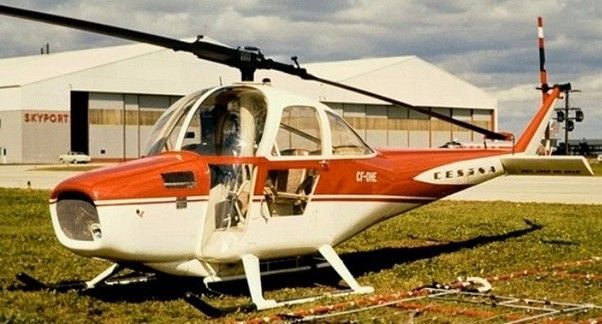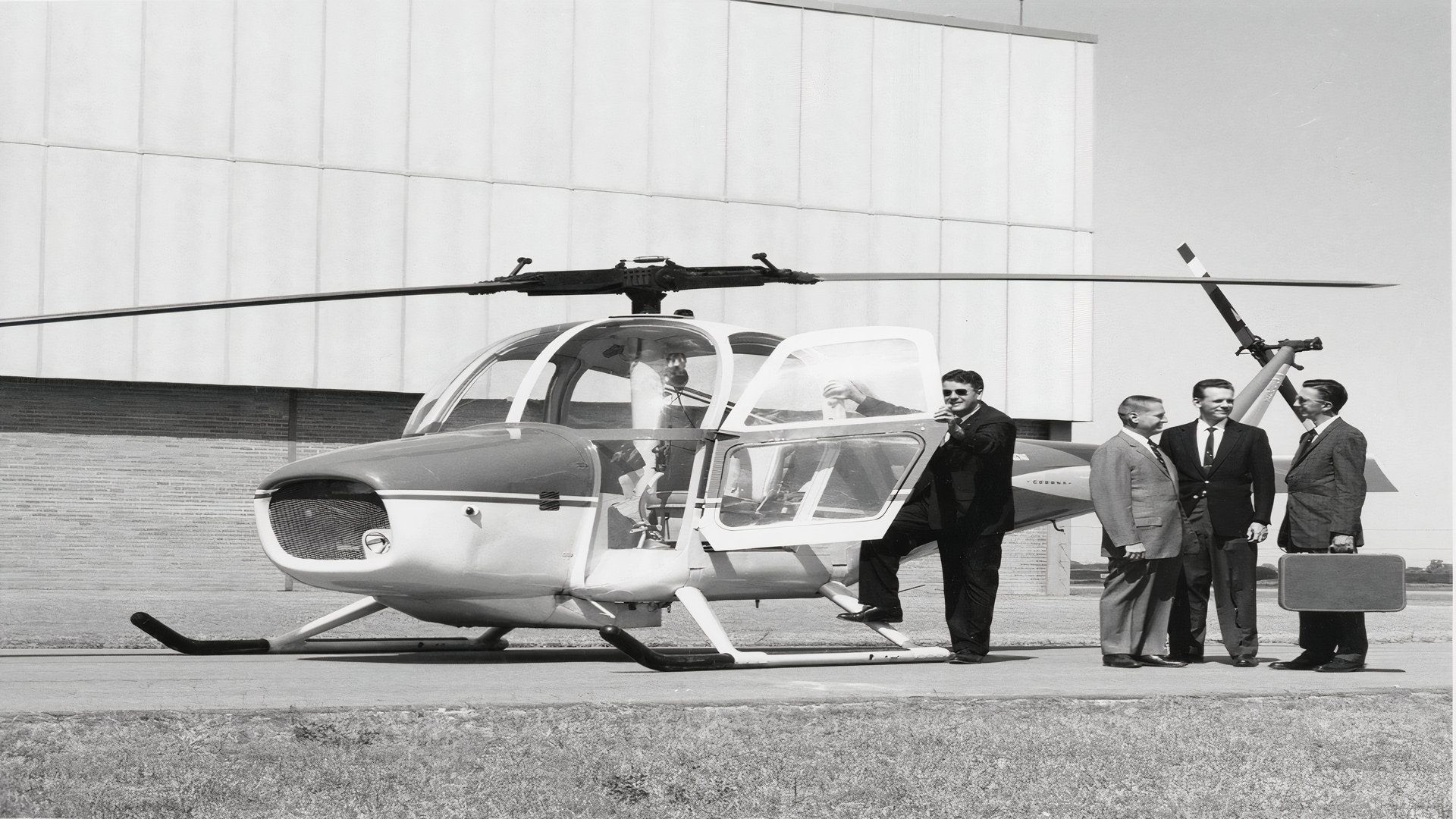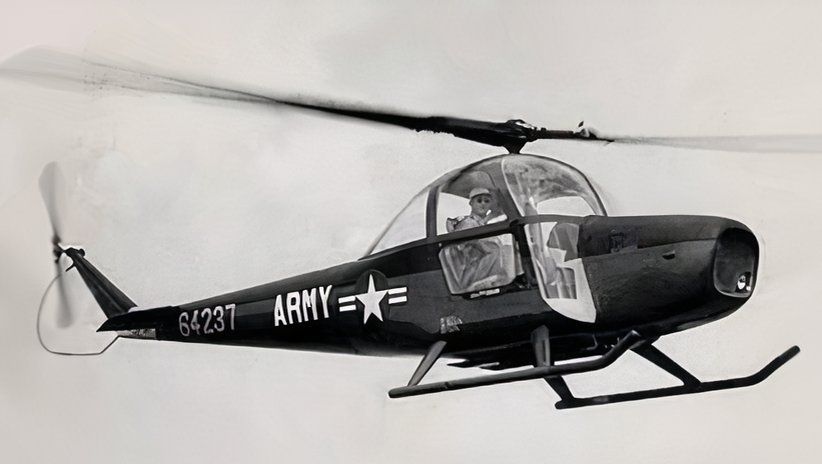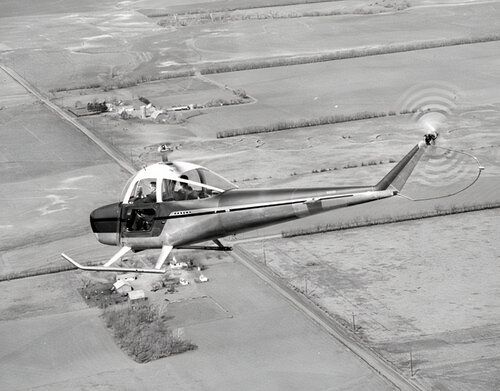Most aviation enthusiasts know that the Cessna Aircraft Company has built everything from race planes and crop dusters to turboprops and large-cabin jets. But a helicopter? Who knew? The Cessna CH-1 Skyhook holds a unique place in aviation history as the only helicopter ever produced by the Cessna Aircraft Company.
Photo: Cessna
Cessna developed the CH1 in the 1950s, launching an ambitious foray into the rotary-wing market during a period of rapid expansion in the aviation industry and the helicopter market in particular.
The Cessna CH-1 Skyhook: Cessna’s venture into rotorcraft
|
Cessna CH-1 Skyhook Details |
|
|---|---|
|
Manufacturer |
Cessna Aircraft Company |
|
First Flight |
July 1953 |
|
Introduction |
1956 |
|
Unique Achievements |
The first helicopter to land on Pike’s Peak; the last piston-engine helicopter to set the altitude record |
|
Design Features |
Single, two-bladed main rotor; Front-mounted reciprocating engine; Semi-monocoque airframe |
|
Certification |
Received CAA type certificate 3H10 on June 9, 1955 |
|
Status and Production |
Production ended in December 1962 with about 50 units built |
|
Military Designation |
United States Army designated the CH-1C as the YH-41 Seneca |
In the 1950s, helicopters were considered very cool. Not only were they starting to see wide use in transportation, law enforcement, and emergency response, but they were also featured in television series—shows like “Whirlybirds” that aired on CBS for three seasons in the mid-1950s. Of course, Cessna would want to design a rotary-wing aircraft for the booming vertical takeoff and landing market. They hatched a plan.
Origins and development of the Cessna helicopter
In 1952, Cessna acquired the Seibel Helicopter Company in Wichita, Kansas. This acquisition brought with it the S-4B helicopter design and the expertise of Charles Seibel, who became the chief engineer of Cessna’s new Helicopter Division. The development of the CH-1 began in the summer of 1952, with Cessna pilots initially test-flying the Seibel S-4B to familiarize themselves with helicopter operations.
Photo: Cessna Aircraft Company
For the next step, the Cessna Helicopter Division built a one-quarter-size model of the CH-1 for wind tunnel testing conducted at Wichita State University. The first full-size machine lacked an enclosed fuselage, engine cowling, and horizontal stabilizer. The initial prototype test article, referred to as CH1-1, first flew in hover in July 1953 and eventually made test flights as high as 10,000 feet.
Design and Features
The CH-1 Skyhook had several unique features:
- Airframe: The aircraft featured a semi-monocoque airframe that closely resembled Cessna’s fixed-wing aircraft, giving it a distinctive appearance among helicopters of its era.
- Engine Placement: Unlike most helicopters, the CH-1’s engine was mounted in the nose, similar to fixed-wing aircraft. This design choice provided easy maintenance access but created challenges for exhaust venting.
- Rotor System: The CH-1 utilized a single two-bladed main rotor with unique L-section hinges attaching the blades to the hub, eliminating the need for conventional pitch change bearings.
- Cabin: The spacious cabin offered 360-degree visibility and could accommodate up to four people in later models.
- Controls: The helicopter featured boosted controls to help eliminate feedback.
Variants
The Cessna CH-1 went through several iterations and variations:
- CH-1: The initial prototype powered by a Continental FSO-470 engine.
- CH-1A: A four-seat version with improved stability.
- CH-1B: Upgraded with a more powerful Continental FSO-526 engine, producing 270 hp.
- YH-41 Seneca: The military designation for 10 CH-1Bs purchased by the U.S. Army for evaluation.
- CH-1C: The final civilian production model received instrument flight rules certification.
Photo: US Army
Performance and Achievements
The CH-1 Skyhook set several notable records. On September 15, 1955, it became the first helicopter to land on the summit of Pikes Peak at an elevation of 14,110 ft. On December 28, 1957, Army Captain James E. Bowman piloted a modified CH-1B to set an official FAI world altitude record for helicopters of 29,777 feet. This record stands as the highest altitude ever achieved by a piston-powered helicopter. The CH-1C was the first helicopter to receive instrument flight rules certification from the FAA.
Market Reception and Challenges
Despite its innovations, the CH-1 faced several challenges. There were reliability issues. The Continental engine and transmission had reliability problems, with a short engine Time Between Overhaul (TBO) of only 600 hours.
Photo: Cessna Aircraft Company
Cessna helicopters were expensive. In 1960, the CH-1C cost $79,960, significantly higher than competitors like the Bell 47J, which cost $67,000, and the Brantley 305, which cost $54,000. Additionally, the tail boom size, which resulted from the airplane-style fuselage, caused aerodynamic problems in hover and forward flight.
While the timing for the Cessna Helo seemed promising, it debuted at a time when small turbine helicopter designs emerged, making the piston-powered CH-1 less competitive. There were safety concerns, too—the crash of a CH1 during a marketing demonstration in 1961 near Midland, Texas, resulted in negative publicity.
Production and Legacy
Cessna ended the CH-1 program in December 1962 after producing approximately 50 units. The company took the unusual step of buying back nearly every example for scrapping, likely to mitigate potential liability concerns. Today, only one CH-1 is known to survive – a YH-41A Seneca stored at the United States Army Aviation Museum at Fort Rucker, Alabama.
When the Cessna Aircraft Company made another miscalculation in introducing the Cessna 162 Skycatcher in 2009, an eerily similar scenario to the CH1 unfolded. Cessna scrapped all the unsold aircraft in 2016.
While the CH-1 Skyhook failed commercially, it remains a fascinating chapter in Cessna’s history. It demonstrates the company’s willingness to innovate and explore new markets in the rapidly evolving post-war aviation industry.





